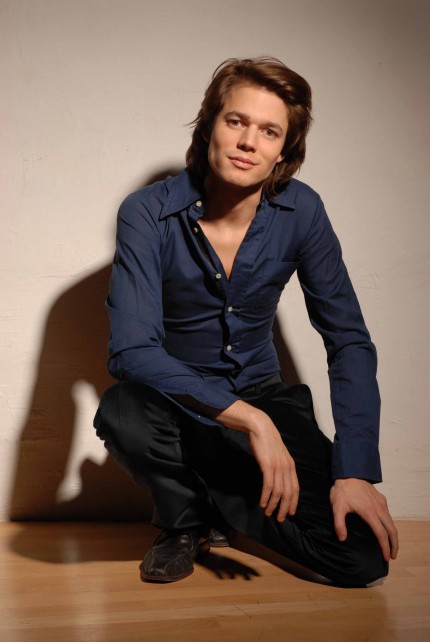Fray shows compelling artistry in intelligent program
David Fray has become a regular fixture at Orchestra Hall in recent seasons. While some cynics would posit that the prominence is due to his being Riccardo Muti’s son-in-law, that would be a disservice to the French pianist who is clearly a serious musician in his own right.
Indeed, in his recital Sunday afternoon, Fray showed himself a keyboard artist of the first order with an uncommonly intelligent recital that organically segued from Bach and Boulez to Schoenberg and Brahms. Fray’s playing was so consistently compelling that one can forgive the occasional youthful excess, like raising his arms high at the end of virtuosic bursts, as if he just scored a goal.
In his opening Bach set of Preludes and Fugues, (Nos. 1-8) from Book I of The Well Tempered Clavier, the pianist negotiated a skillful balance between contrapuntal clarity in the fugues and the expressive potential of Bach on a modern Steinway. From his fluently paced yet subtle rubato in the opening Prelude in C major, Fray explored a wide variety of expression while maintaing period rigor, as with the busy charm of the No. 5 Prelude in D major. He brought a free, singing line to the introspection of the Prelude in C sharp minor, heartfelt tenderness to the Prelude in E flat major, and, an especially probing rendering of the final work in E flat minor.
I remain ambivalent about the music of Pierre Boulez; last season’s MusicNOW performance of his arid Dérive 2 was one of the most tortuous concert experiences of my life. Like many high modernists of the mid- and late-20th century, Boulez’s intellectual style seems most effective when it is stripped down to the sparest essentials of resources and duration. (Similarly, Elliott Carter’s string quartets are arguably his most successful works in any genre.)
It was his Douze notations, written at age 20 in 1945, which made Boulez’s name as an anti-establishment, angry young man of postwar musical Paris. Though rigorously organized in serial manner, Boulez later stated that Notations is something of a goof on Second Viennese School dogma, with its 12-tone technique deployed in 12 miniatures running 12 minutes.
Yet seven decades on, Notations still packs a considerable punch in its original keyboard version, with Boulez cramming a remarkable amount of music in a concise space. Fray had the full measure of this aggressive, demanding score, putting across the explosive outbursts and crashing chords with daunting power. Yet he was equally effective in pointing the full range of contrasts, with moments of fragmented serenity and finely chiseled lyricism.
Arnold Schoenberg’s Three Piano Pieces, Op. 11, is the first keyboard music of his maturity. As Schoenberg influenced Boulez, the model here is clearly Brahms’ late piano works, albeit seen through a refracted lens, deconstructed according to serial stricture.
Fray was here at his finest, bringing concentrated expression and a terraced dynamic and tonal range to this music. He conveyed the elegiac nature of the first piece as much as the brooding darkness of the second, his unsettled right-hand figures, set against the insistent two-note bass motif. The relentless agitation of the final section was thrilling in its broken-chord virtuosity, Fray again deftly registering the more restrained pages of edgy repose.
With the Seven Fantasies, Op.116, we had the real thing, interior piano works composed by Brahms near the end of his life. This is music imbued with a sobriety and prevailing sense of melancholy, with five of the sections cast in a minor key.
Even with repeated loud coughs by Sunday’s restive audience in the quietest moments, Fray maintained admirable focus in this ruminative music. He caught the restless energy of the Capriccio in D minor, and the pensive expression of the Intermezzo in A minor was set off by the bucolic middle section. The heartfelt lyric flowering of the Intermezzo in E major was especially atmospheric with a glowing coda, and the set effectively rounded off with Fray’s bravura take on the Capriccio in D minor.
The enthusiastic ovations recalled Fray to the stage. The pianist’s single encore was offered as a tribute to Pierre Boulez who died this past January: Busoni’s arrangement of Bach’s chorale prelude “Nunn komm der Heiden Heiland,” BWV 659, rendered with spare, pointillist delicacy.
Posted in Performances




Posted Jun 07, 2016 at 12:01 am by Matthias
What can be done about coughing audience members?